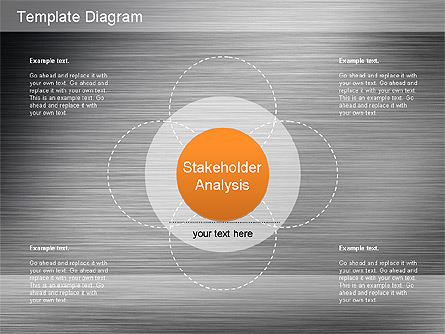

Judging by its popularity among companies and other entities as a decision-making tool, a stakeholder analysis or stakeholder map must come with a number of benefits. They might only be participating for a short while or contributing little to the project’s survival. Low Interest & Low Influence – Those who’s participation is the least crucial to the project. Low Interest & High Influence – Those stakeholders that aren’t actively engaged or interested in the project but have the power to affect how it turns out. High Interest & Low Influence – Those stakeholders who are highly vested in the project and its outcomes but can’t do much to affect it. High Interest & High Influence – Those stakeholders who can make or break the project, and are highly interested in its final outcome. Use the category definitions below for your assessment.
Proceed to add each stakeholder into the box where they belong, depending on your assessment of their individual levels of influence and interest in the project. Next, assign each of the above categories to a box of its own. You can create a simple matrix by dividing one square into four smaller squares. The matrix is created by creating four important categories that will best judge your stakeholders’ relevance to a project. To start your stakeholder analysis, you need to create a matrix. That power can be expressed through policing, funding, networking, which also means they can boost the project or destroy it. The level of influence is determined by a stakeholder’s power over a project. Stakeholders that expect to benefit from a project’s final results, for example, tend to express more interest in the project. The level of interest is essentially how much a stakeholder cares about the final results from the project. The most common factors used include level of interest and level of influence, but any can be used depending on the project. To create a stakeholder analysis, you need two major factors that best represent the relevance of your stakeholders to the project. Stakeholder Analysis Templatesīefore you can develop your own stakeholder analysis, or use a stakeholder map template, you need to understand how a stakeholder analysis works. Also known as a stakeholder map or stakeholder matrix analysis, the process helps managers and teams discover which stakeholders to cater to first by ranking each one according to factors such as influence and interest. 
A stakeholder analysis is a visual representation of the relevance of each stakeholder on a project. That’s where a stakeholder analysis comes in. The trouble is that handling all stakeholders at the same level can prove difficult. 9 The different stakeholder analysis templates you can useīecause of their influence and power, stakeholders need to be catered to and kept in the loop throughout any project they’re involved in.8 A Step by Step Guide to Creating a Stakeholder Analysis.

4 How does the stakeholder analysis work?.







 0 kommentar(er)
0 kommentar(er)
